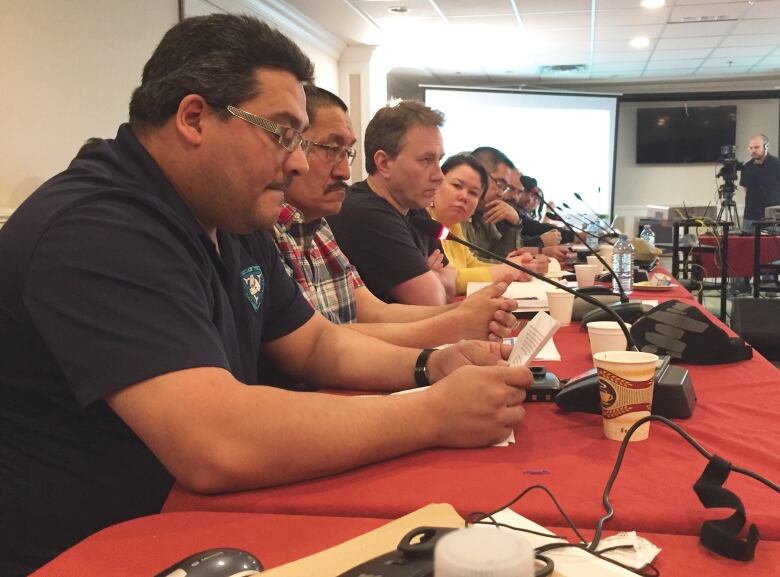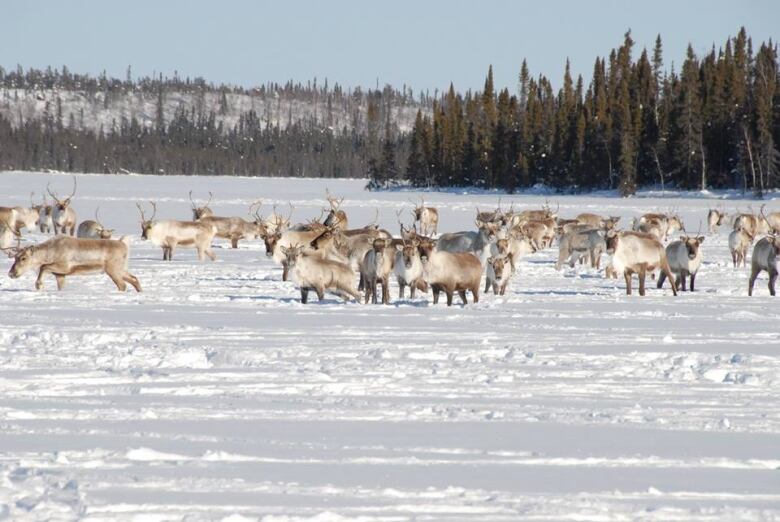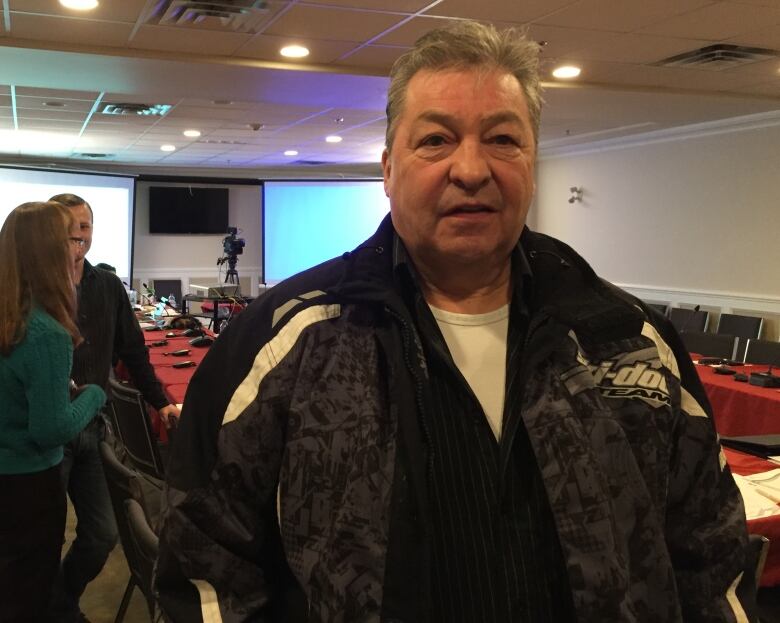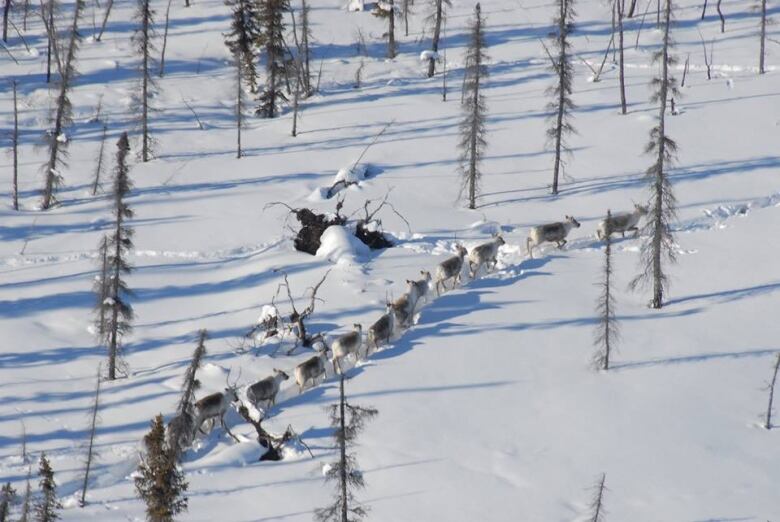Nunavut reverses position on protection of caribou habitat
It's awful when they don't consult you in the decision they make, says head of Kivalliq Wildlife Board


The news came to light during technical hearings in Iqaluit this week, where stakeholders from across the territory are sharing their views on Nunavut's firstterritory-wide land use plan.
It also came as a surprise.
"It's awful when they don't consult you in the decision they make," said Stanley Adjuk, the president of the Kivalliq Wildlife Board.

'A very irresponsible decision'
The board represents hunters and trappers organizations in Nunavut's Kivalliq region, which have been lobbying for years for additional protection of caribou calving grounds, migration corridors and water crossingsto address the thinning herds.

"Caribou is our main staple diet. Without that I know a lot of us would be starving."
Adjuk's views echo those made in submissions to the planning commission by the Qikiqtaaluk Wildlife Board, the Nunavut Wildlife Management Board, the Beverly and Qamanirjuaq Caribou Management Board and the Northwest Territories government.
The Tlicho government, whose citizens hunt from two caribou herds that calve in Nunavut, is also in support of protections for core caribou calving habitat.
"Mining comes and goes," Adjuk said. "Caribou have been here forever."
'An internal government decision'
The Nunavut government's original submission to the planning commissionin 2014called for no development on caribou calving grounds and key migration corridors, according to Steve Pinksen, the assistant deputy minister of environment who represented the Nunavut government at the land use meeting.
The government now wants those decisions to be made on a case-by-case basis.

Pinksen said the decision, which was made in the past two weeks, was not based on new science but on consideration of many factors, including economic development.
Environment Minister Johnny Mike, who last summer wrote to a Nunavut regulatory board urging it not to allow mineral exploration in the Bluenose East calving grounds, offered no comment on why the policy was reversed.
Mike said neither he nor Premier Peter Taptuna will be attending this week's meetings.
Rapid decline in N.W.T
The decision comes at a time when the great northern caribou herds are rapidly declining.

"This is where all young caribou are born," said Earl Evans of Fort Smith, N.W.T., who chairs the Beverly and Qamanirjuaq Caribou Management Board, an intergovernmental bodythat aims to safeguard that herd for future generations.
"Any measures that are not implemented to protect this herd in Nunavut are going to impact us."
The Nunavut government won't get the final word on the land use plan. Its submissions will be weighed by the Nunavut Planning Commission alongside those of others. The commission says it plans to hold final hearings on the plan this fall.
'Now is the time to be cautious': WWF
Sharon Ehaloak,executive director of the Nunavut Planning Commission, stressed that any land use plan should be seen as a document in transition.

"We know that herds move with time, and the plan can adapt to changing caribou conditions in the future as warranted by new information."
But when it comes to caribou calving grounds, numerous groups, including WWF-Canada, stressed the need for prudence.
"Now is the time to be cautious and prevent development in highly sensitive caribou calving grounds," said Iqaluit-based Paul Crowley, director of WWF-Canada's Arctic program.
"Caribou numbers are crashing, and when a herd disappears, that's it."













_(720p).jpg)


 OFFICIAL HD MUSIC VIDEO.jpg)
.jpg)



























































































